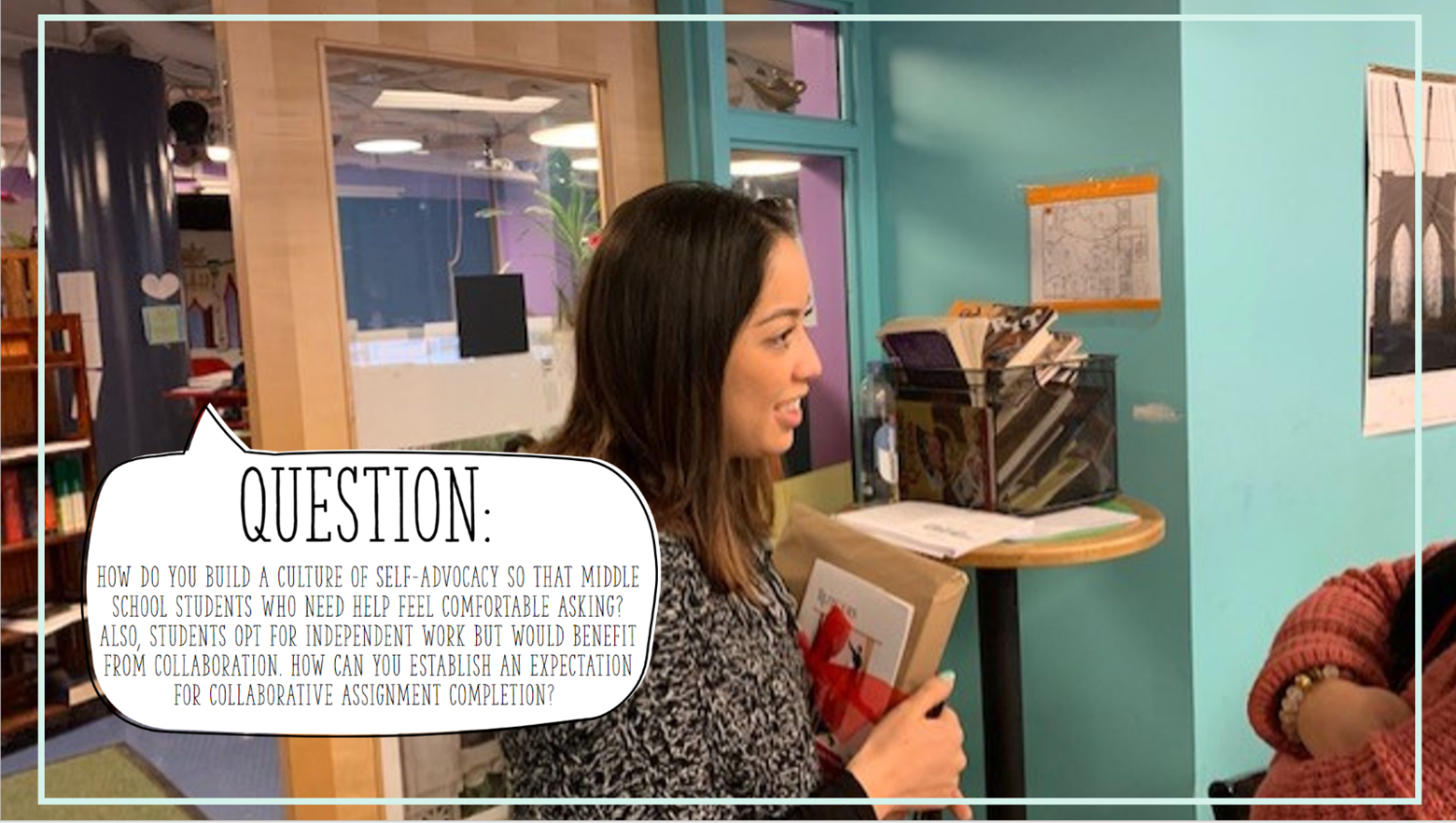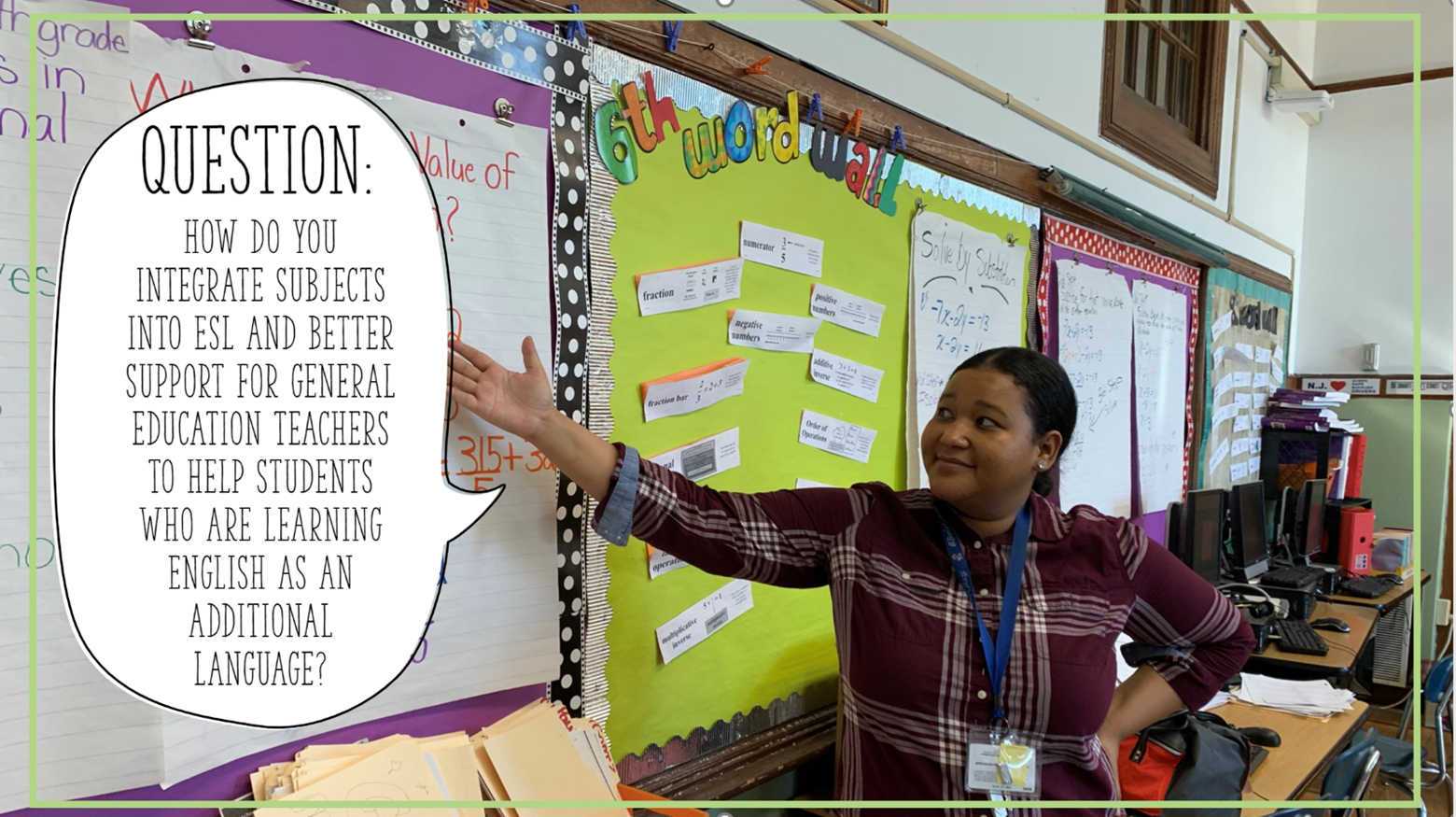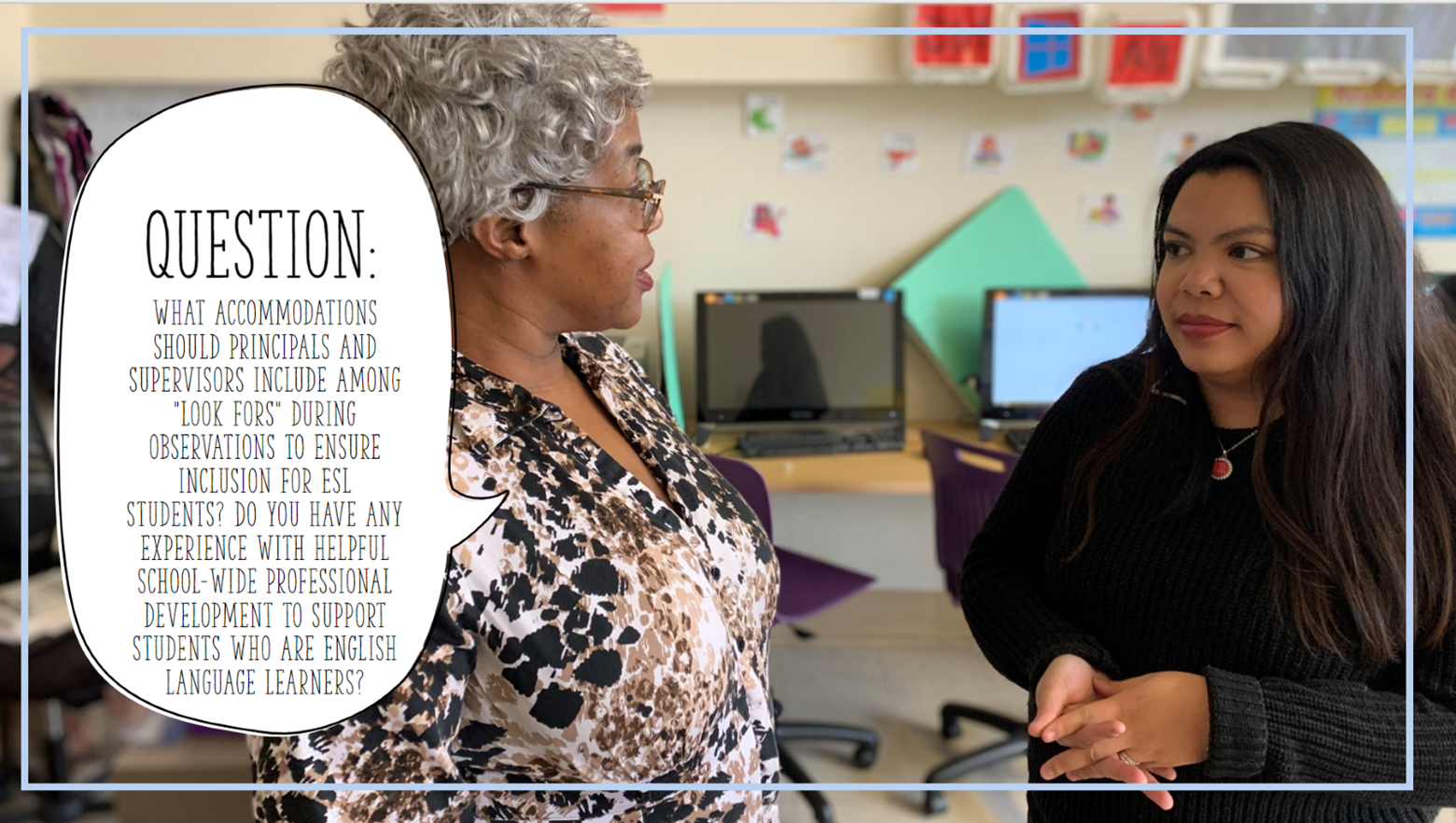Veteran Educators Answer Questions From New Teachers
Rutgers Alternate Route strives to offer new teachers the best resources and necessary advice from seasoned educators.
During our fall meeting for Diverse Teachers For Diverse Schools (DTDS), we asked novice teachers to share any questions they had. In turn, we posed the questions to our professional learning community to weigh in.
We turned this advice into a blog so it may be shared with educators far and wide!


- A culture of self-advocacy is first preceded by a culture of student academic safety. Teacher self inquiry from the point of view of students may shine a light on how comfortable the students feel advocating for themselves and asking for help. Are wrong answers greeted well in class? Are multiple solutions welcome and celebrated in class? Is a question usually greeted by a sort of victim-blaming that I should have known the answer, or had I worked hard enough I wouldn't have to ask?
- Establish the classroom learning environment as a safe and confidential place which includes treating students with respect. Implementing this type of learning environment is not only for student safety but also for student empowerment.
- The best way to build a culture is by displaying the behavior you want to see. Self-Advocacy is a skill students have to practice. I always model that asking for help is a strength--both in my actions and within the culture we establish beginning the first day of class.
- Relationship building is everything. Create a self-welcoming environment.
- The teacher can be a sage on the stage or a guide on the side. A guide on the side is always preferred as students learn to think mathematically.
- Be intentional, reflective, and willing to process with the group why the collaboration was instrumental to the learning.


- Embrace that all students are language learners in our content areas. Be intentional in providing explicit vocabulary instruction and opportunities to produce language in every lesson. Visuals, media, wait time are all ways we support our multilingual learners--and all students.
- Differentiate assignments so students are allowed to express their understanding in pictures, play, interviews, their native language, explaining to peers, making videos, doing demos. Do not just rely on traditional methods for assessing understanding.
- ESL students also need more time to complete work as they are constantly processing the language and then completing their work. Try to follow flexible deadlines to support their language development.


- When doing observations, principals and supervisors should see that teachers have provided
opportunities for students to infuse their culture into the lesson.
- Multilingual learners/English learners should be engaged in every lesson. They should not sit in the corner or in a group--they should physically be involved in all activities.
- Pacing: students may need a slower delivery.
-
In order to ensure inclusion for ESL students, principals and supervisors should look for the following accommodations:
1) Is the teacher tapping into their prior knowledge?
2) Has the teacher created partnerships, whether two people or small groups?
3) Does the teacher implement SDAIE strategies where learning games, manipulatives, hands-on activities and visual aids such as graphic organizers are incorporated. *The key here is to use them consistently and with a comfortable structured approach.


- I would follow the chain of command first. A conversation with parents or guardians, building leaders, guidance counselors, child study team members, Director of Special Services and the Special Education Coach are always good resources in advocating for your students.
- Work with your case manager and CST team to see what supports students are REQUIRED in IEPs which are legally binding documents.
- Depending on district/school size, request mentorship or meeting with other teachers regarding their needs/supports. For example, is it possible to share instructional resources or even support staff for a certain time/period of the day?
- Are there certain resources/supplements that you have researched that would benefit your students? Request a specific program that you can cite as being differentiated to student needs and ask for funding.
- Take small bites. If students are behind, address their deficiencies in a standing station during rotations or a brief activity at the start of a lesson. Then, scaffold and differentiate grade level material during the main lesson.


- Covid learning loss has exacerbated this and forced us all to teach to an even wider distribution of proficiency in our classes. We cannot always teach only to the grade level or reading level that a student is at; eventually they should be brought up to their current level though this progression is not always linear.
- In virtually every class, you are going to have students who are below the grade level. It's our job to figure out where they are, what is lacking and then work to build that skill in those areas through small group instruction or depending on the age level, they may receive intervention services directly related to the subject. Your goal is to not expect them to do the on-level work if they are not there. You meet students at their level and help them progress to success. You also encourage them and do not even make them feel that if they are not on-level that they are less smart, etc. Celebrate any small improvements along the way. It's not how they finish, but the journey that is important.
- Throughout the process, be sure to continually remind the student that you are working toward the progress of getting on track and moving forward together. Set short term goals & celebrate every success along the way!
- Plan instruction to support individual students needs and not just blanket instruction.
If you’re considering following your dream of teaching, Rutgers Alternate Route can offer you the support and training you need to succeed. Be sure to follow Rutgers Alternate Route on Twitter or sign up for Alternate Route’s monthly newsletter for more information and stories from the field of education.

 Sharlene Laud has extensive experience in education from K-12 to higher education and holds a Doctorate in Education from the Rutgers Graduate School of Education. Dr. Laud is the Assistant Director of the Rutgers-GSE Alternate Route Program in the Department of Learning and Teaching. Follow her on X @sharlene_laud
Sharlene Laud has extensive experience in education from K-12 to higher education and holds a Doctorate in Education from the Rutgers Graduate School of Education. Dr. Laud is the Assistant Director of the Rutgers-GSE Alternate Route Program in the Department of Learning and Teaching. Follow her on X @sharlene_laud





